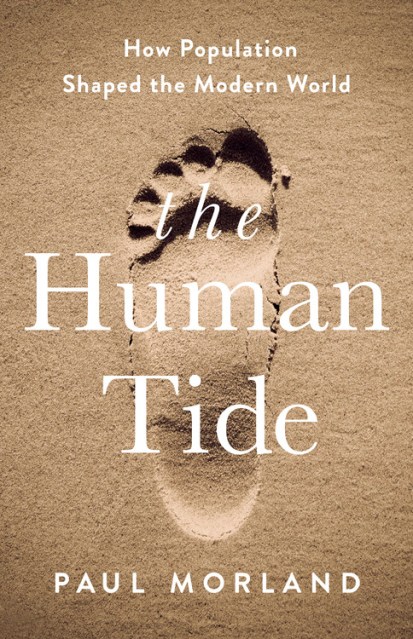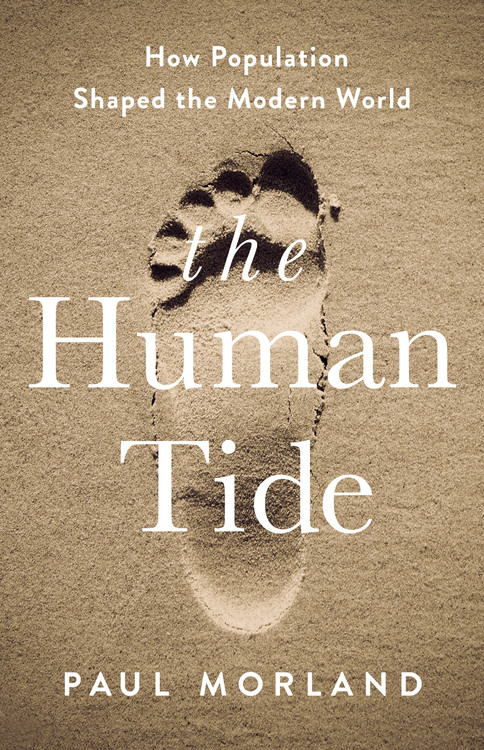Promotion
Use code BEST25 for 25% off storewide. Make sure to order by 11:59am, 12/12 for holiday delivery!
By clicking “Accept,” you agree to the use of cookies and similar technologies on your device as set forth in our Cookie Policy and our Privacy Policy. Please note that certain cookies are essential for this website to function properly and do not require user consent to be deployed.
The Human Tide
How Population Shaped the Modern World
Contributors
By Paul Morland
Formats and Prices
- On Sale
- Mar 5, 2019
- Page Count
- 352 pages
- Publisher
- PublicAffairs
- ISBN-13
- 9781541788367
Price
$28.00Price
$36.50 CADFormat
Format:
- Hardcover $28.00 $36.50 CAD
- ebook $16.99 $21.99 CAD
- Audiobook Download (Unabridged)
This item is a preorder. Your payment method will be charged immediately, and the product is expected to ship on or around March 5, 2019. This date is subject to change due to shipping delays beyond our control.
Buy from Other Retailers:
The rise and fall of the British Empire; the emergence of America as a superpower; the ebb and flow of global challenges from Nazi Germany, Imperial Japan, and Soviet Russia. These are the headlines of history, but they cannot be properly grasped without understanding the role that population has played.
The Human Tide shows how periods of rapid population transition — a phenomenon that first emerged in the British Isles but gradually spread across the globe–shaped the course of world history. Demography — the study of population — is the key to unlocking an understanding of the world we live in and how we got here.
Demographic changes explain why the Arab Spring came and went, how China rose so meteorically, and why Britain voted for Brexit and America for Donald Trump. Sweeping from Europe to the Americas, China, East Asia, the Middle East, and North Africa, The Human Tide is a panoramic view of the sheer power of numbers.
Genre:
-
"An illuminating perspective on the history and likely future of population trends."STARRED REVIEW,BOOKLIST
-
"Morland's real skill is linking economic, political, military and cultural trends to the demographic story...lucid, jargon-free and full of neat observations...The future, Morland concludes, is grey (societies that grow old before they grow rich), green (as global population declines, humans will need less land and fewer resources) and much less white (because of more rapid growth of non-European populations and immigration into majority white countries)... this is an admirable introduction to a vital subject."THE TIMES
-
"A global history that gallops from 1800 and Brexit to Donald Trump's wall, seen through the prism of births, deaths and migration... The Human Tide is packed with information...This is, deliberately, a book for those with little knowledge of demography...What are fascinating are the author's projections of where we are heading demographically. To an older population in the UK certainly: the number of people over 85 will treble in 30 years as the baby-boomers age. That means a more indebted nation, but it could also mean a more peacefully inclined one"SUNDAYTIMES
-
"Useful for students of geopolitics, international economics, and demography alike."KIRKUS REVIEWS
-
"Engrossing...How many people live in a place, how old they are and how hungry they are, explains a lot about how their rulers behave, he argues. Do you have a fast-growing young population like late-19th-century Germany? Your neighbours will fear you. An imploding birth rate, like modern Italy? Your economy will probably shrink too. It's not a new idea but Morland offers plenty of evidence to prove just how much it matters...This book adds to the debate about the basic causes of history."BOOK OF THE WEEK, EVENING STANDARD
-
"Morland shows how history has been driven not only by science and economics, but by birth, sex, life, and death. An essential read for anyone seeking to understand not only the human tide, but the tide of history. Gripping, authoritative, and compelling."Richard V. Reeves, author of Dream Hoarders: How the American UpperMiddle Class Is Leaving Everyone Else in the Dust, Why That Is a Problem, andWhat to Do About It
-
"Demographic change underlies most of the trends of our time, from controversies over immigration to the challenge of funding welfare states. In The Human Tide, Paul Morland provides an erudite and entertaining overview of the influence of population trends on history."Michael Lind, author of Land of Promise: An Economic History of theUnited States
-
"Paul Morland has rudely awakened us to the hidden hand of demography in shaping history and politics in the modern world. Morland's superb political-demographic history of the world alerts us not only to how manpower matters, but why the perception of population shifts may be even more consequential than the shifts themselves. If you want to understand our times, you must read this book."Eric Kaufmann, author of Whiteshift: Populism, Immigration and theFuture of White Majorities
-
"A fascinating account of how much sheer population numbers have mattered in human history---and why major demographic upheavals, happening now and over the next few decades, are going to affect us all."Alison Wolf, Sir Roy Griffiths Professor of Public Sector Management atKing's College London and author off The XX Factor: How the Rise of WorkingWomen Has Created a Far Less Equal World
-
"Population has been historically one of the key factors that has defined the relations between states. As Paul Morland shows, it has now become the defining factor for the political dynamics within states. The Human Tide shows that we live in an age of hard and soft demographic engineering."Ivan Krastev, chairman of the Centre for Liberal Strategies in Sofia
Newsletter Signup
By clicking ‘Sign Up,’ I acknowledge that I have read and agree to Hachette Book Group’s Privacy Policy and Terms of Use







